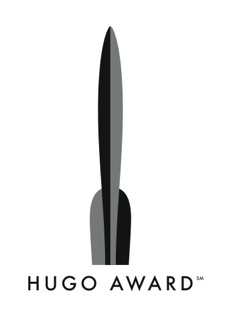With the announcement of the Hugo Awards for 2012 recently, there’s been a lot of discussion over some of the inclusions in the graphic story category. The category covers a wide arena of graphic story representation, including comic book collections (graphic novels) as well as web comics. So let’s talk a little about what happened this year and, maybe, what should have happened.
Like we have to wonder why the much-loved web comic xkcd is considered for the “Fan Art” category instead of alongside graphic story web comic contenders Shlock Mercenary and Digger. And sure, the Girl Genius creators bowed out to give other people a chance for once (Girl Genius has been sweeping since the award was added in 2009) which was very kind. And maybe there’s a discussion to be had about the fact that graphic novels and web comics should be in two separate sections altogether since they represent a different though similar style of storytelling. But what I’d really like to talk about are the comic nominations. Namely, whose on there and who maybe should have been considered.
Right now, the list tops out with three of the big names in “literary” comics/graphic novels today. I have nothing but adoration for Locke and Key and it’s creator Joe Hill. It’s about time that this series got more love, especially after the heinous tanking of the potential TV series by Fox. (Big mistake there, folks, the pilot was incredible.) And The Unwritten by Mike Carey may be the best wickedly snide comic that lobs under-hand jokes at Harry Potter fans and literary fiends alike with its meta storyline. Both of these are great choices, but one wonders why Fables got the nod. Granted, it’s always been an amazing series and I’m a huge fan, but its strength in my opinion has wained considerably in recent offerings. Rose Red has been the strongest of the most recent books, yet overall I’d say there are other comics out there that fulfilled better graphic storytelling for this past year.
So, in that spirit, here are some choices that I think were strange in their absence.
The Walking Dead
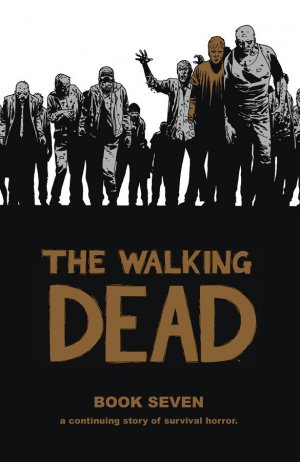
Where is Kirkman? Anybody seen a Kirkman representation? To say that Kirkman’s work in 2011 wasn’t good enough to get a nod from the Hugos is kind of like saying he’s made no contribution to the zombie genre for the last few years. The Walking Dead Book 7, a big old hardcover book huge enough to no doubt bludgeon a walker with, brought our survivors to a great new place in the series: a little bit of stability. It tackled major issues like domestic abuse and mental stability for our heroes while still bringing us the gritty action meant to keep us on the edge of our seats. Could I see this filling out an award right next to The Unwritten for its story arc? Absolutely. There is a depth to Book 7 and the psychological exploration of survivor’s issues that keeps up Kirkman’s tradition of excellent character-driven narrative, which is what makes Walking Dead appealing issue after issue.
Flight of Angels
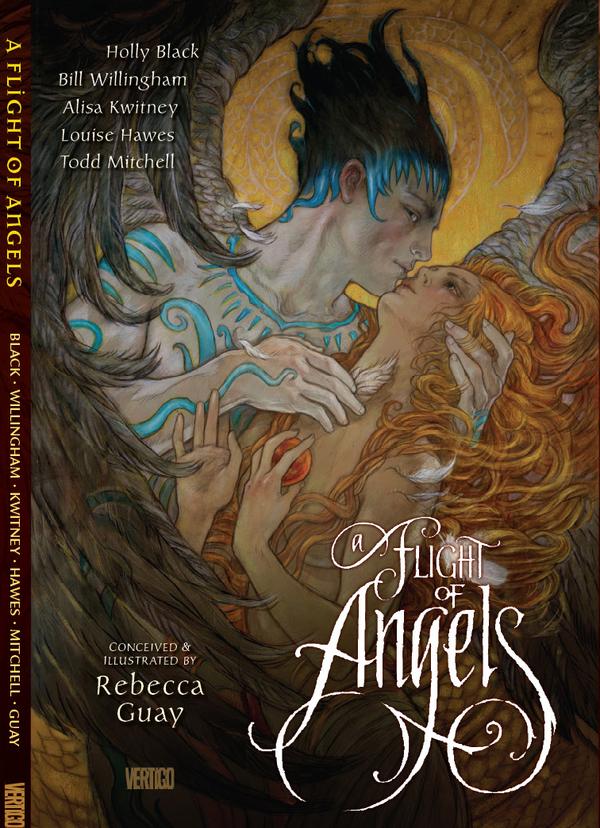 Rebecca Guay’s Flight of Angels just happens to be one of the most beautiful pieces of work I’ve read in a long time. It might be that the subject matter was right up my alley, but the idea of a bunch of faeries coming upon a crashed angel in a forest and conducting a storytelling trial to decide what to do with him is satisfying on so many levels. Forget that the art itself is so lovely it aches, that’s something that anyone who knows Rebecca Guay’s work would expect the minute you spy the cover. And speaking of Bill Willingham, the much-lauded writer of Fables has a story in this as well, since the graphic novel features short stories as part of the larger piece penned by Willingham, Holly Black, Todd Mitchell, Alisa Kwitney and Louise Hawes. This book, along from being a beautiful piece that borders on the folktale, the biblical and the Shakespearean all at once, is one of the most amazing works of art on paper—as far as I’m concerned—to come out of 2011. But again, that could just be because I believe Guay draws the best angels and faeries anywhere. Maybe I’m biased. But I could just be right.
Rebecca Guay’s Flight of Angels just happens to be one of the most beautiful pieces of work I’ve read in a long time. It might be that the subject matter was right up my alley, but the idea of a bunch of faeries coming upon a crashed angel in a forest and conducting a storytelling trial to decide what to do with him is satisfying on so many levels. Forget that the art itself is so lovely it aches, that’s something that anyone who knows Rebecca Guay’s work would expect the minute you spy the cover. And speaking of Bill Willingham, the much-lauded writer of Fables has a story in this as well, since the graphic novel features short stories as part of the larger piece penned by Willingham, Holly Black, Todd Mitchell, Alisa Kwitney and Louise Hawes. This book, along from being a beautiful piece that borders on the folktale, the biblical and the Shakespearean all at once, is one of the most amazing works of art on paper—as far as I’m concerned—to come out of 2011. But again, that could just be because I believe Guay draws the best angels and faeries anywhere. Maybe I’m biased. But I could just be right.
Baltimore—The Plague Ships
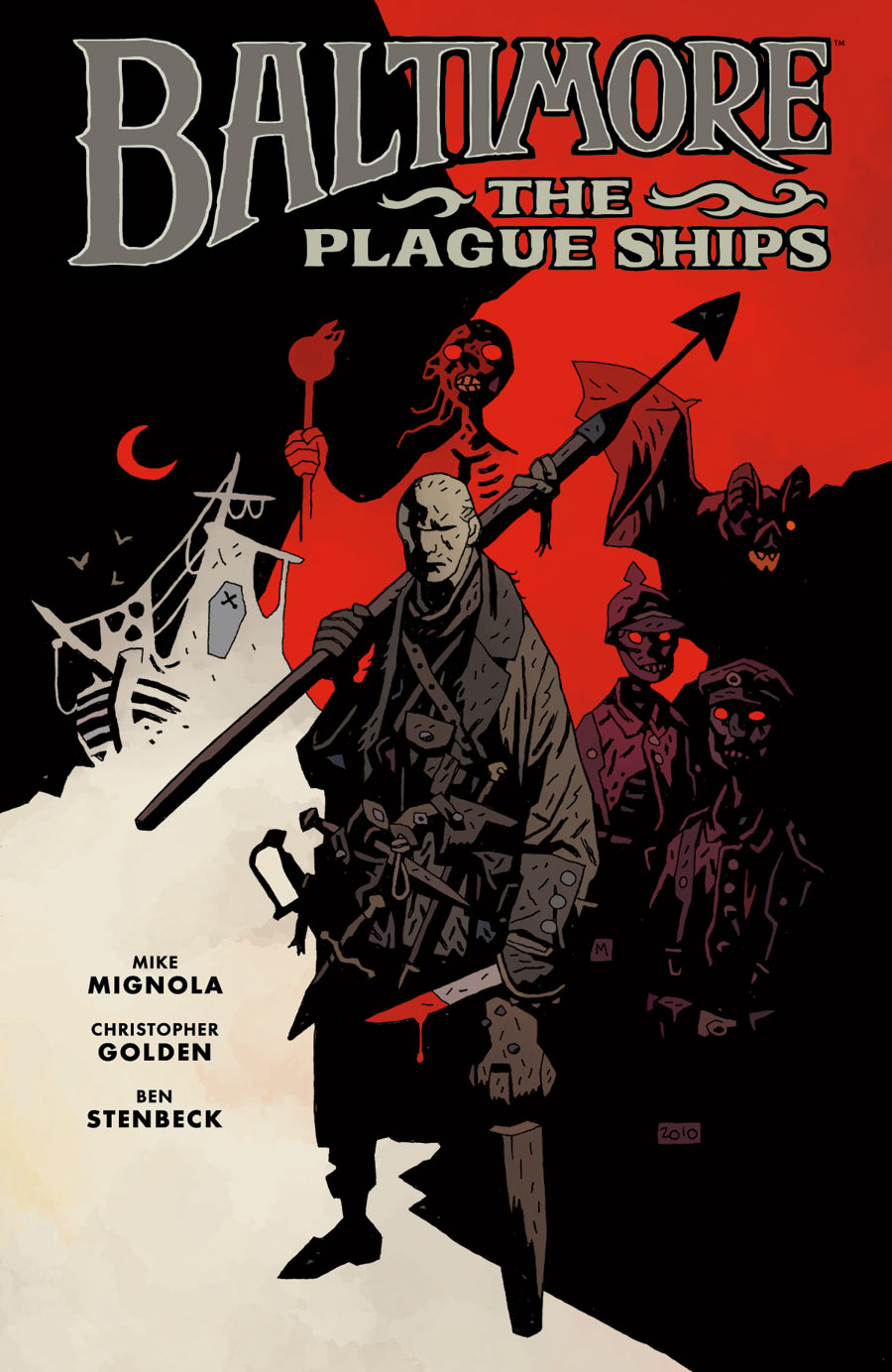 So let’s talk about Mike Mignola for a second. Let’s talk about some of the things that have come out of that man’s universe in 2011. We saw great Hellboy contributions like Hellboy: House of the Living Dead. Then there is the entire storyline of B.P.R.D. Hell on Earth that began fantastically in the Volume One graphic novel. Both of these could be considered contenders, with B.P.R.D. being the stronger contender of the two. But it’s his creation with author Christopher Golden called Baltimore: The Plague Ship that I cite as the terrible oversight by the Hugo folks. Mignola has created a solid story with his alternate reality end of World War I in which vampires roam and plague ships carry deadly cargo across the seas. With Mignola’s power as a creative force and Golden’s thoughtful writing behind, it’s no wonder Baltimore was such a huge hit. It’s dark, tasty fun and has that Hellboy flavor that makes all Mignola’s work so minimalistically gorgeous.
So let’s talk about Mike Mignola for a second. Let’s talk about some of the things that have come out of that man’s universe in 2011. We saw great Hellboy contributions like Hellboy: House of the Living Dead. Then there is the entire storyline of B.P.R.D. Hell on Earth that began fantastically in the Volume One graphic novel. Both of these could be considered contenders, with B.P.R.D. being the stronger contender of the two. But it’s his creation with author Christopher Golden called Baltimore: The Plague Ship that I cite as the terrible oversight by the Hugo folks. Mignola has created a solid story with his alternate reality end of World War I in which vampires roam and plague ships carry deadly cargo across the seas. With Mignola’s power as a creative force and Golden’s thoughtful writing behind, it’s no wonder Baltimore was such a huge hit. It’s dark, tasty fun and has that Hellboy flavor that makes all Mignola’s work so minimalistically gorgeous.
American Vampire
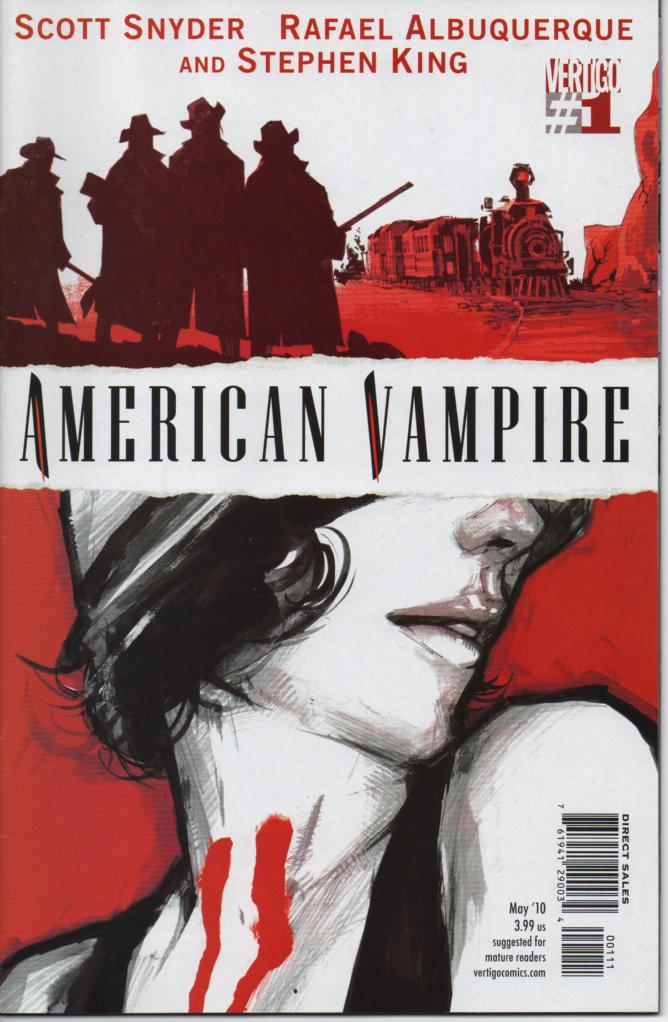 This is where my choice questioning goes to table-flipping level confusion. How did a great graphic novel like American Vampire miss getting added to the list alongside Fables, Locke and Key and The Unwritten? Scott Snyder’s reinvention of the vampiric wheel with American Vampires is a stunningly inventive, fast-paced and fun adventure with a main character that cannot be ignored in Skinner Sweet. This is a main character that not only drives the story but got Stephen King to sit up and take notice enough to write the vampiric outlaw’s backstory comics! This is a graphic novel that’s got it all: Black Dahlia era Hollywood, Wild West hijinks and a slick and sexy rewrite of vampire lore that makes Snyder’s work stand out. Not only that, the art is consistantly gritty and beautiful to boot, no matter the time period that it’s depicting. How this could not get a nod is absolutely beyond me.
This is where my choice questioning goes to table-flipping level confusion. How did a great graphic novel like American Vampire miss getting added to the list alongside Fables, Locke and Key and The Unwritten? Scott Snyder’s reinvention of the vampiric wheel with American Vampires is a stunningly inventive, fast-paced and fun adventure with a main character that cannot be ignored in Skinner Sweet. This is a main character that not only drives the story but got Stephen King to sit up and take notice enough to write the vampiric outlaw’s backstory comics! This is a graphic novel that’s got it all: Black Dahlia era Hollywood, Wild West hijinks and a slick and sexy rewrite of vampire lore that makes Snyder’s work stand out. Not only that, the art is consistantly gritty and beautiful to boot, no matter the time period that it’s depicting. How this could not get a nod is absolutely beyond me.
Joe the Barbarian
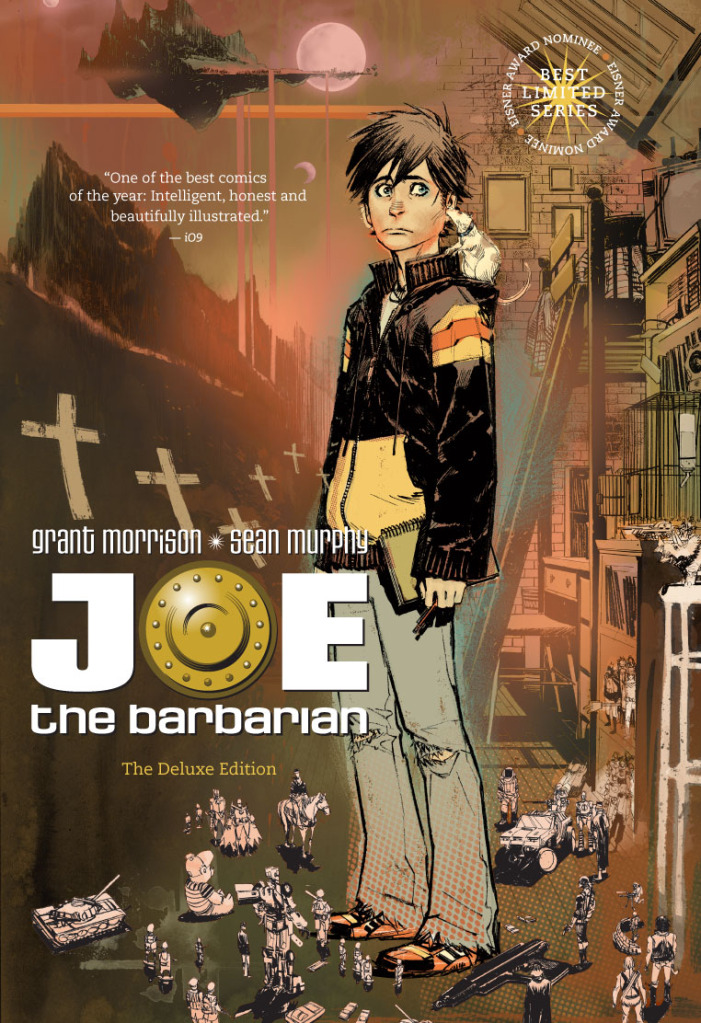
So a few of my commentaries so far have gone along the lines of “where is the love for…” and then waxed on about a certain creator. But this year, Grant Morrison put out a couple of amazing pieces that should have gotten a nod. And while We3 doesn’t fit the Hugo categories, Joe the Barbarian comes away as an incredible story that should get a nod. It’s a perfect Neverending Story/Where the Wild Things Are riff in a way that Percy Jackson only wishes it could be. Joe is a young boy who starts envisioning other worlds when he doesn’t take the medication that might save his life, worlds where he gets to be the big damn hero. The story dances the fantastical line, blurring the edges of reality while jerking our heart-strings about a boy, his dreams of being a hero and the reality of his situation. It’s moving in ways that Morrison knows how to do so well, and is a piece missing in the representation this year.
I could also cite some close runner-ups for possibilities, including some quality Daytripper and even DC’s Flashpoint as a great graphic story. But then I’d have to talk about the immortal question: how long can we look past super hero comics and say they shouldn’t be counted for this award (and maybe others) when they’re also producing quality sci-fi work in graphic form? These five are only a grab bag of the other possible contenders out there, but they are the best and brightest in my eyes. Congrats to those nominated, because the field was littered with great competitors that, perhaps erroneously, got left behind.
Shoshana Kessock is a comics fan, photographer, game developer, LARPer and all around geek girl. She’s the creator of Phoenix Outlaw Productions and ReImaginedReality.com










